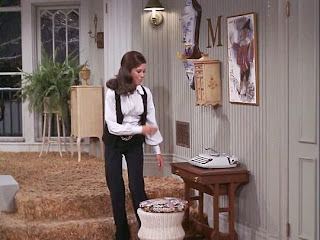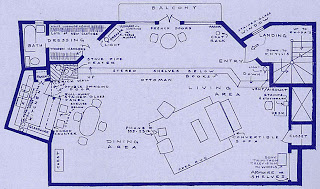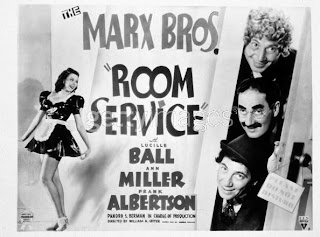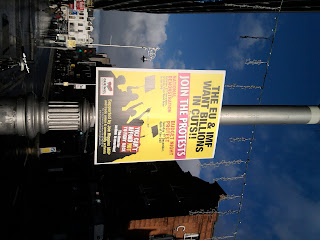What often makes me change my mind is the fact that friends like certain things that I do not particularly like spontaneously. For example, I did not know that I liked blogging, by my friend Becky advised me to do so. She once blogged about That Girl, and has always raved about The Mary Tyler Moore show, so I was intrigued and started watching these series from scratch, just like I started with a blank canvas for the I Love Lucy show.
Funny I mention canvas.... I can do crochet (another interest revived by Becky's needle work) whilst watching TV (underneath is a prototype of a larger babette blanket that I would like to make, so really it was just to get me stated, I bought a lot of yarns odds and ends, and just went with the flow),
And since this is a rather 1970's project to embark on, as I was watching the mary Tyler Moore show, I was struck by how similarly my taste is with Rhoda's, Mary's sidekick in the show. I much prefer Rhoda's apartment to Mary's.
See, Rhoda's apartment is very cozy, there is the orange bean bag, and coordinated rug, the old Rococo Mary Poppins like lamp, the shocking pink lamp shade, and matching bedspread, the amazing purple and pink and red sort of tartan curtains that bring the whole thing together. Whereas Mary's apartment is much more airy, and elegant, and subtle, and beige and brown... and sedate.
For an extensive article about Mary's apartment, see The Mary and Rhoda Magazine, where you will even find tips on decorating Mary's style. Take a closer look at the design. I think this seamless part of sitcoms is fascinating. I remember watching an excellent documentary about how design set evolved in the Frasier series. (Frasier Crane's Apartment is a bonus feature on the Frasier Season 1 DVD set.). But the detail of Mary's apartment is just as fascinating.
This got me thinking about the amazing task that is set design, because it has to consciously recreate the individual psychological processes that go on when we decide to make a space for ourselves, and to top all this for people who do not even exist!
Think about it, your interior reveals so much about you. It reveals the amount of money that you spend on it, which in turns depends on your income, and your job, it reveals your taste which is shaped by the times you live in, and the time and effort you are willing to put in it which reveals more of your personality.
In TV sitcoms, set designers have to try and replicate this process for fictional characters, but there is of course the added dimension that there is an agenda, a rationale behind this which requires they need to frame a story neatly in a way that our lives are not framed. So for example, Mary's and Rhoda's apartment sets reflect two trends of the 1970's aesthetics and their ideology.
Rhoda's apartment reflects Rhoda's personality - vibrant, slightly anarchic, creative, bohemian, and warm, and the colours reflect her emotional nature which is more exuberant than Mary's.
Mary's apartment on the other hand is much more tame, everything in the right place, all in order, considering that she has to sleep on a pull out couch. She has books, thus implying a certain degree of ability to reflect on things, etc. The colours are more mute and reflect her elegant dress style.
Overall, the idea behind this show and That Girl was to show that single girls would be able to "make it after all", i.e. make it on their own hence the importance of showing these girls living independently from their parents and/or boyfriend husbands- because "women's lib" was very present in 1960's and 1970's collective thought. Both in That Girl and the Mary Tyler Moore show, in the first episode we see these girls moving in their apartment which they rent with their own money (although how could a person like Ann Marie who works the odd job afford her place on 78th in NY remains a mystery, but that's just an aside, and NOT the point of the show).
Also set designers consciously made Rhoda's apartment smaller than Mary's because Rhoda is from New York, and apartments are reputedly smaller there than in Minneapolis, look at Ann's 78th Street flat below which is much more cramped than Mary's, and is in fact a mixture of both Rhoda's anarchic nature, and Mary's elegance. It's as if Ann of That Girl had generated these two character's of Mary Tyler Moore Show. Her apartment is both muted, and elegantly messy.
I could really wax lyrical about this topic, and many people have put much more effort in writing about design set, but it is always fun when watching an old fashioned sitcom to say things like, hey i remember this dish, or this cover or cushion style...we used to have one of those back in the day. And really if I were a set designer, and heard this, I would sit down with a sigh of self satisfaction, and would rest on my laurels for the rest of my life, because surely that would mean that life has a meaning after all!
And on these thoughts, boys, and girls, please do not forget to leave your stocking under the tree tonight, as you may have an expected visitor.... ho ho ho :-)



































